Spinal Immobilization
If EMS providers suspect spinal injury is present based on mechanism of injury, (MOI) and/or one of the criteria listed in Spinal Motion Restriction.
A. Altered mental status.
B. Evidence of intoxication.
C. Distracting pain/injury/emotional distress (i.e., extremity fracture).
D. Neurologic deficit (numbness, tingling, paralysis).
E. Midline tenderness.
To perform spinal immobilization, follow these steps:
- Hold manual cervical spinal immobilization.
- Assess for circulation, motor, and sensation (“CMS”) in all four extremities.
- Note results.
- Changes in CMS before/after splinting should be noted as a potential result from the splinting process.
- Place appropriately sized C-collar.
- Place a long backboard on the injured side to facilitate rolling away from injuries, if possible.
- Using additional EMS personnel, log-roll the patient onto the uninjured side using the following technique or similarly effective technique.
- One EMS professional kneeling at the patient’s uninjured side, opposite the backboard, place your hand on the patient’s shoulder furthest from them. The other hand is placed on the patient’s hip furthest from them.
- The next EMS professional should kneel next to the first and place one hand on the patient’s hip furthest from them, and the other hand managing the legs.
- On the head’s count the team will roll the patient as one TOWARD them.
- The EMS professional managing the shoulders should use their hip hand to assess the spine and pull the backboard under the patient.
- On the head’s count, the team will roll the patient back down onto the backboard.
- If needed, reposition the patient to the center of the board by sliding the patient diagonally to avoid manipulation of the spine.
- Place padding in the voids between the torso of the patient and the backboard as needed.
- Secure straps as indicated by manufacture. See below for common placement.
- Secure the head last using commercial head blocks and tape, and release manual spinal cervical spinal immobilization.
- Reassess CMS.

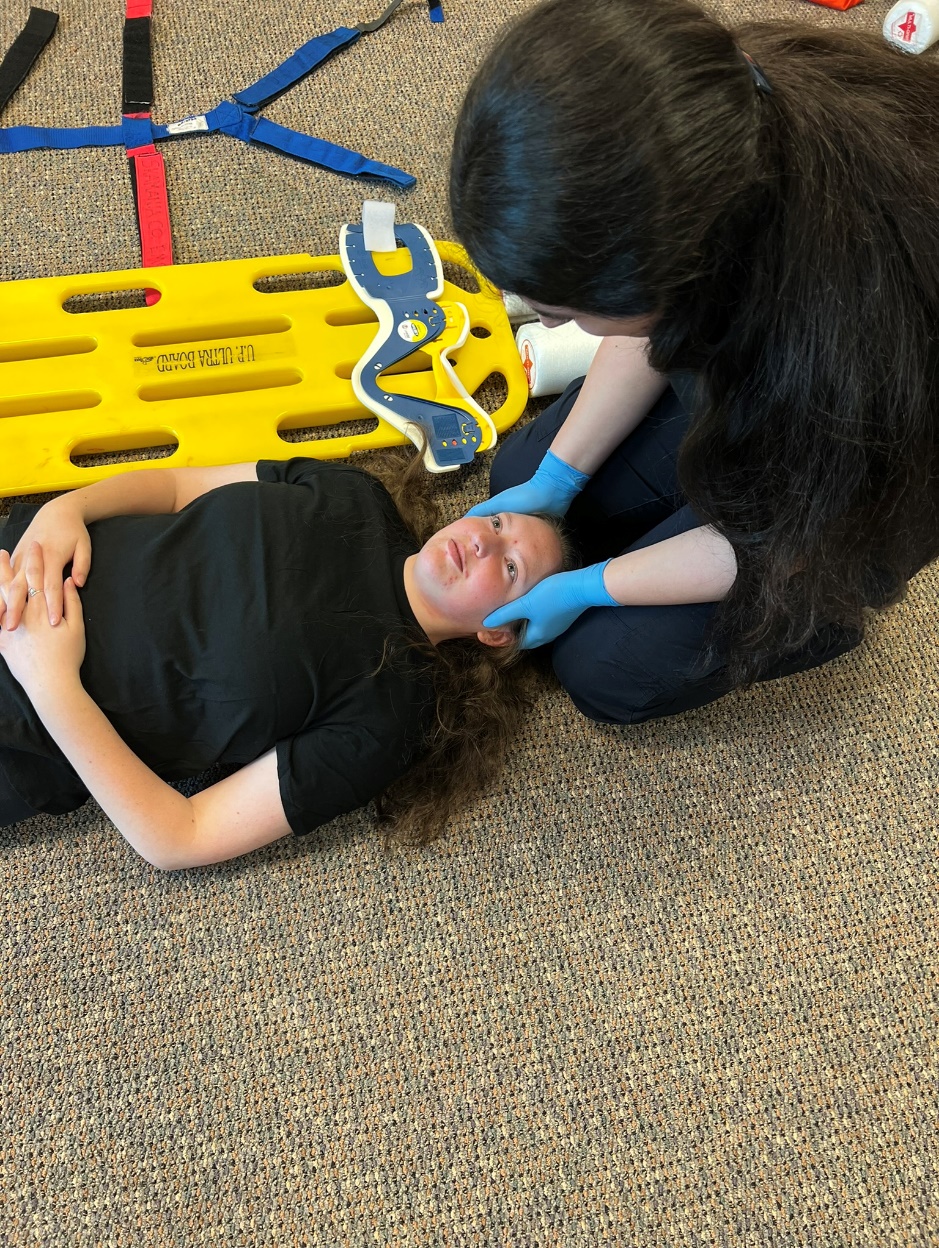
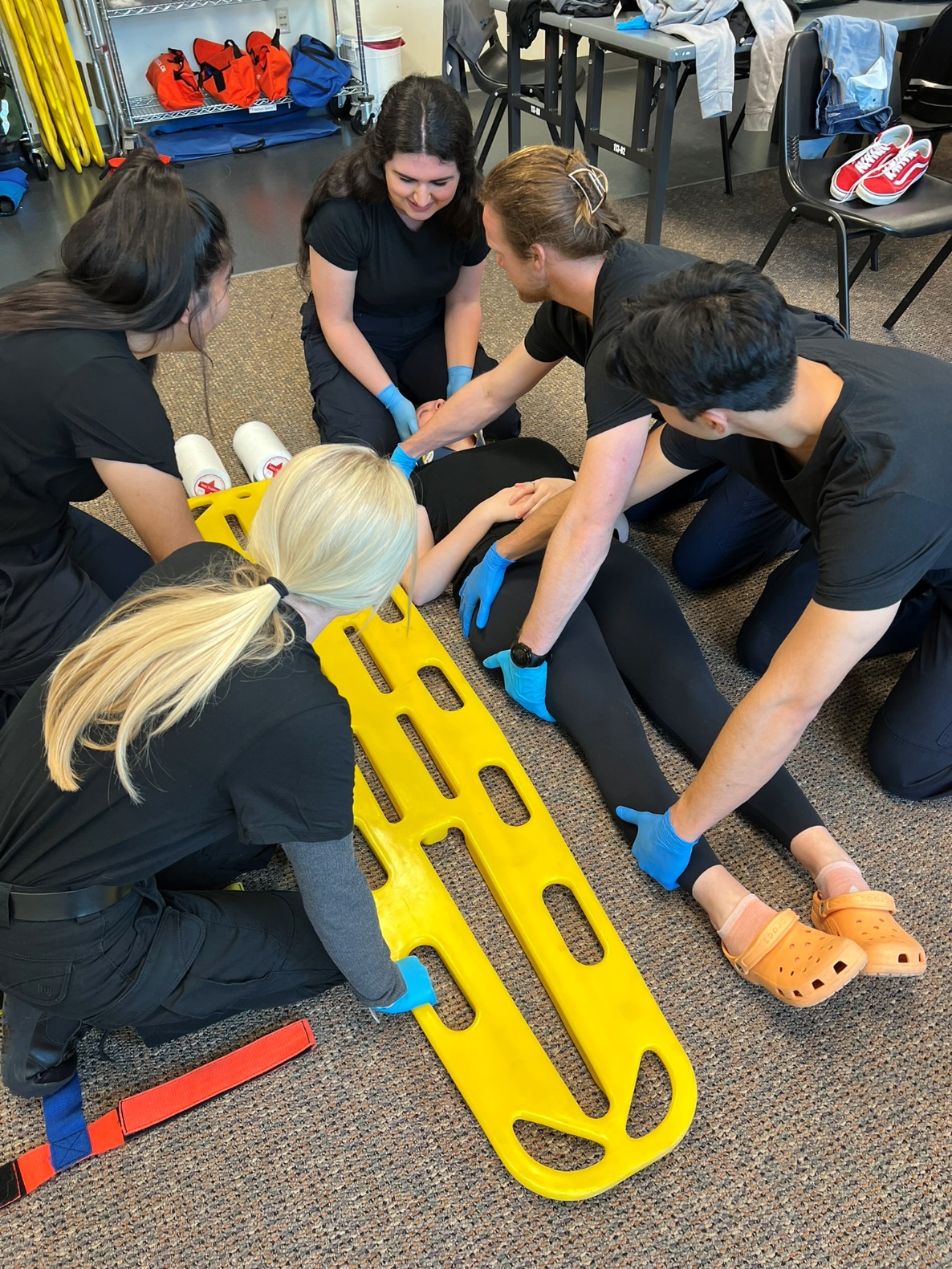
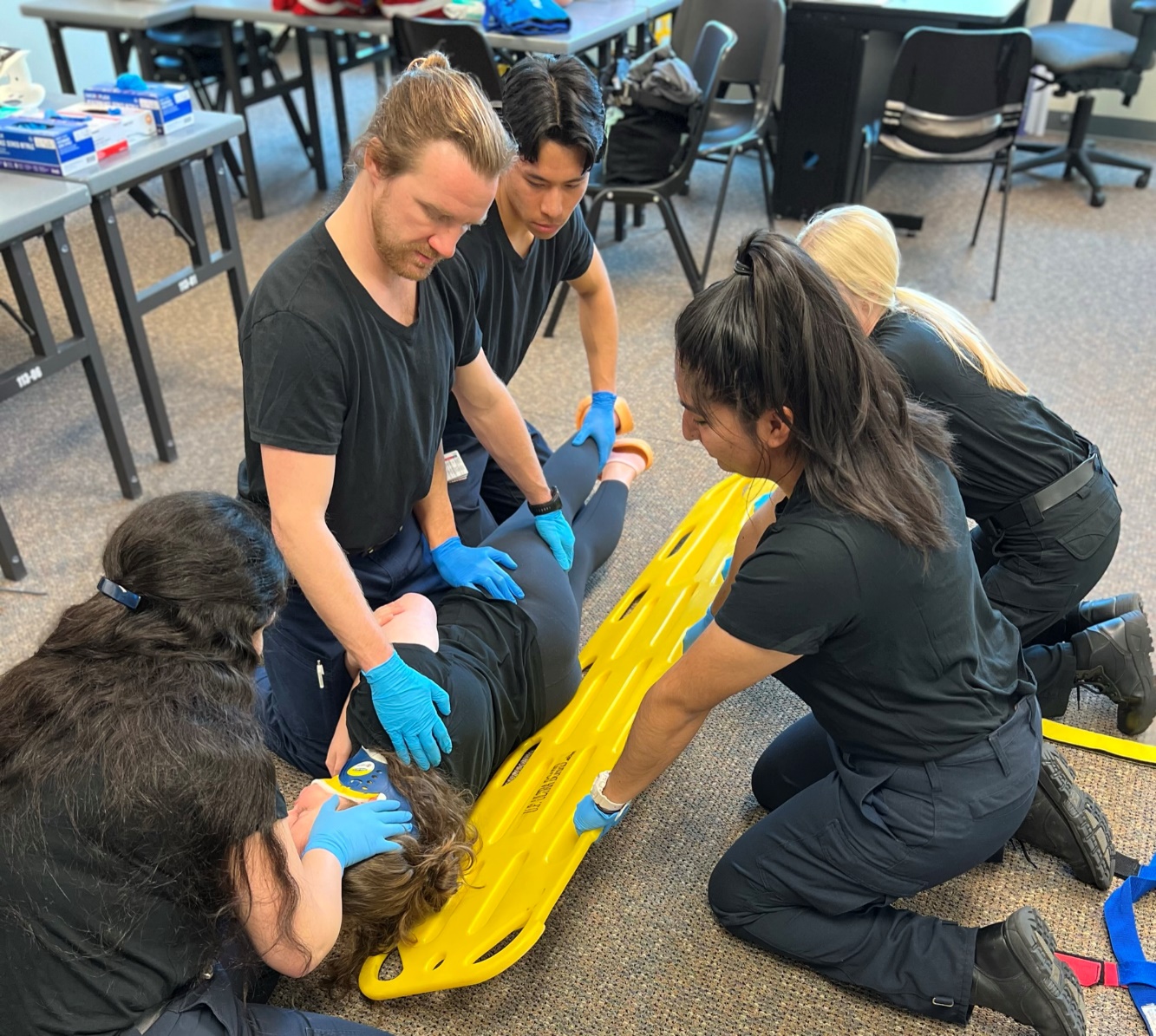
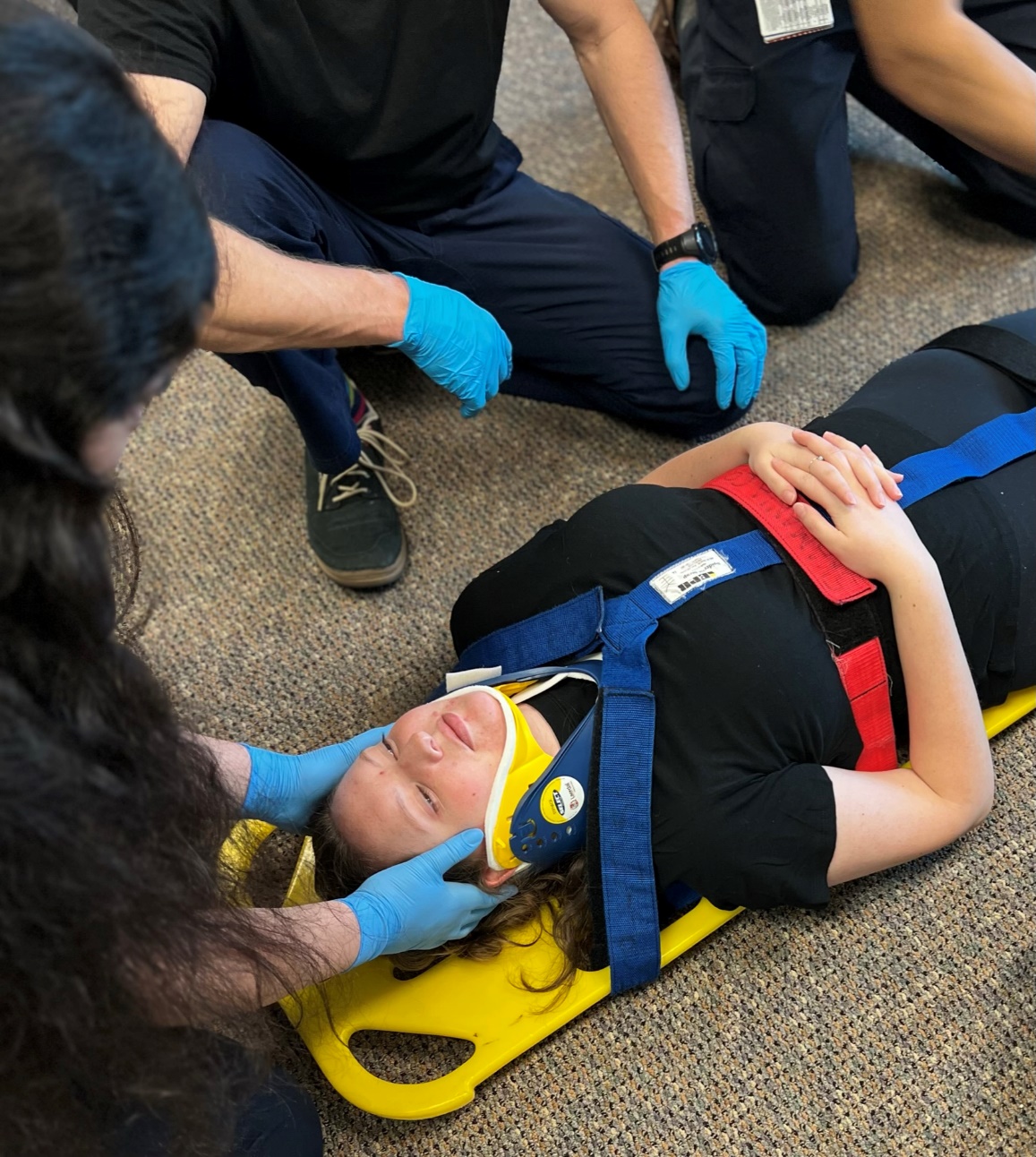

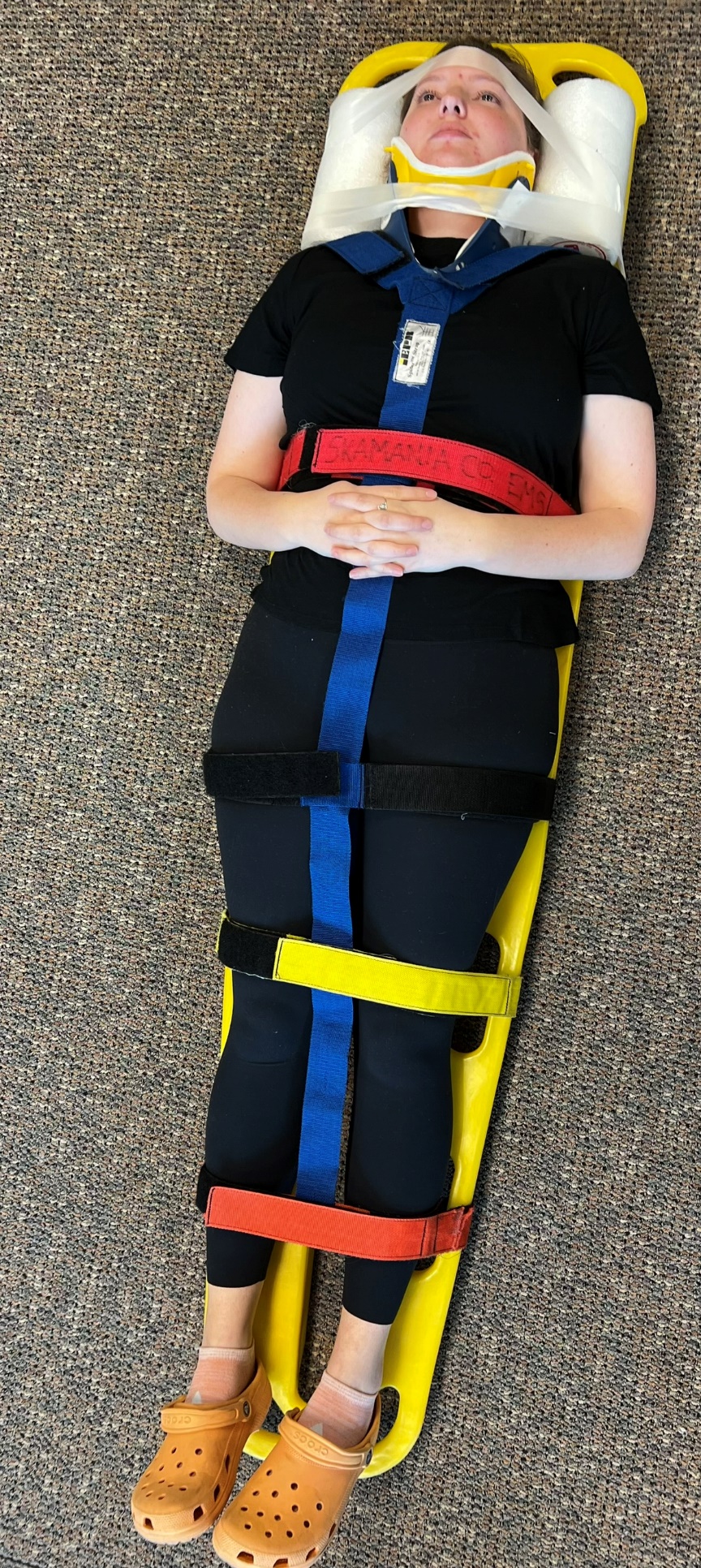
|
Spinal Immobilization |
1 Student |
2 Student |
3 Student |
4 Student |
5 Instructor |
|
Initials |
|
|
|
|
|
The original copy of this book resides at openoregon.pressbooks.pub/emslabmanual. If you are reading this work at an alternate web address, it may contain content that has not been vetted by the original authors and physician reviewers.

